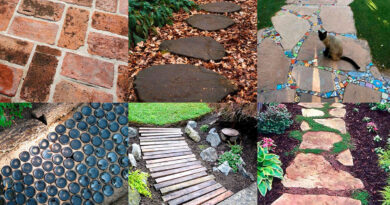17+ Types of Cactus in Arizona – Cholla Cacti Plants, and Flowers
Are you a big fan of cacti? Do you love growing cactus in your house? Well in that case you are headed to the right place. Today I will talk about different types of cactus in Arizona. I will also talk about cacti plant flowers as well. As we all know that cactus can stay healthy even without water and needs zero care. And that is why people use cacti as their houseplants. However, very few know that there are many different types of cactus. Let’s dive deeper into it.
Types of Cactus in Arizona
A cacti is a succulent plant which stores water in the stem and leaves and that also have spikes for protection from any outdoor harmful objects. Arizona is the home of cactus where there are more than 50 species of cactus that will be discussed today.
Some of us are obsessed with this cactus because it requires less maintenance and even some gives colourful flowers too. This gives a unique texture to the interior of your house.
In Arizona zone 5 is found at the highest elevation of mountain ranges like white mountains; on the other hand zone 6 to 10 are present in all the state.
1. Carnegia Gigantia – Saguaro
The scientific name of Saguaro is Carnegia gigantia. This plant ranges from the southwest third of Arizona and southeast California. This is tall and columnar, ranching along its stem. It gives white flowers in late spring.
This young saguaro resembles some of the ferocactus species but they can be identified once they become mature. They can grow to heights of 30 feet or even more. You would be amazed by knowing that the first side arm appears after 60 years.

The white, flowers bloom in late spring, lasting for a few weeks. Sometimes, the tip of the Saguaro becomes distorted, producing fan-like growths.
2. Coryphantha Recurvata – Santa Cruz Beehive Cactus
The flat-topped, spherical shaped stems of coryphantha recurvata grows up to 6 inches up to 50. The stems have yellowish spines, around one inch long – 1 or 2 centrals and up to 15 radials. The yellow flowers appear around midsummer that complements the yellow spines.


3. Coryphantha Robustispina – Robust Spine Beehive Cactus
This small plant, coryphantha robustispina , has a unique appearance. Its compact globe with particularly thick spines; Both the radial and the slightly curved centre are thick. Produces a very thorny plant, dark in colour and pointed in all directions. Yellow flowers bloom around spring and early fall.
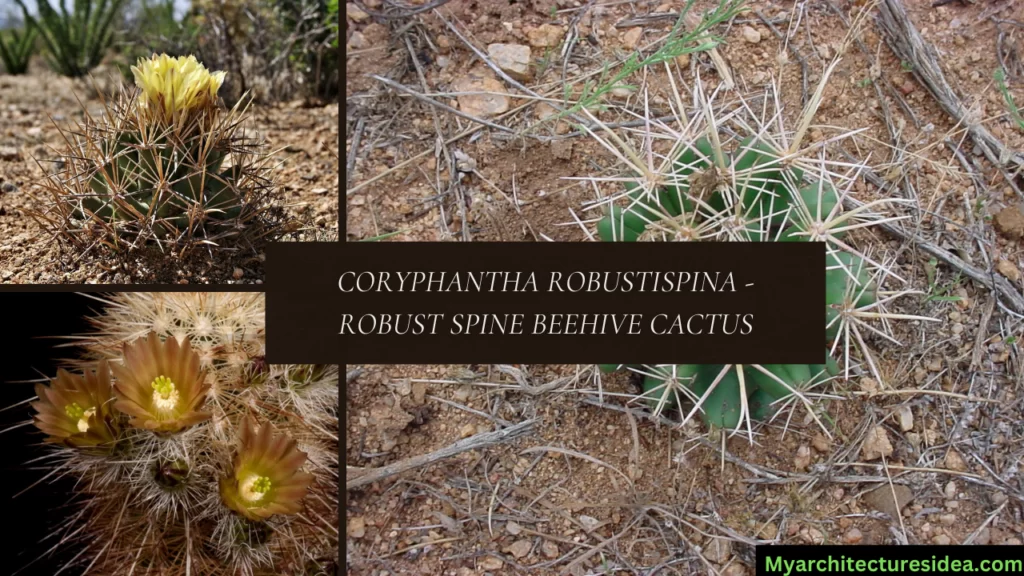
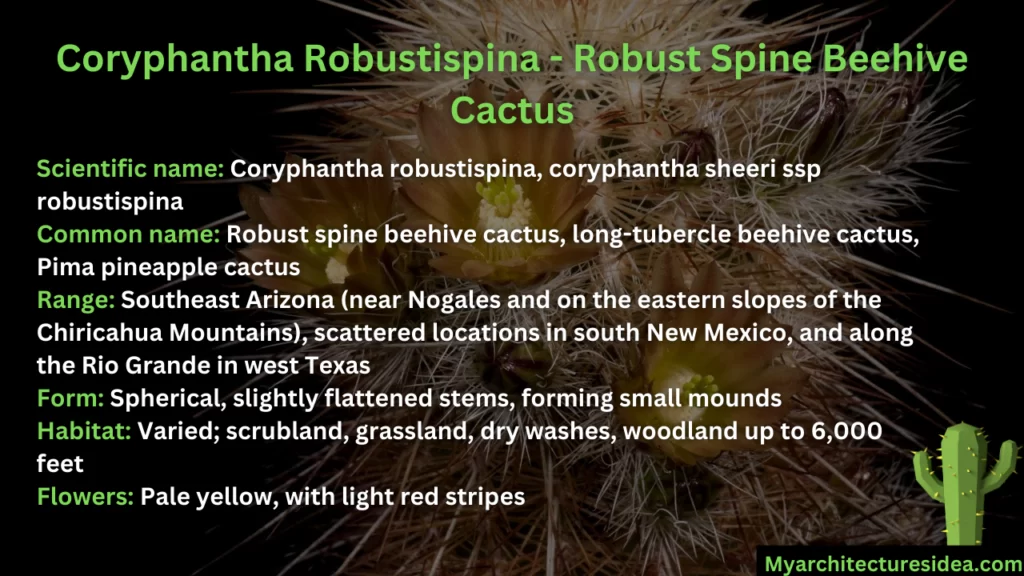
4. Cylindropuntia Acanthocarpa – Buckhorn Cholla
The widespread buckhorn cholla is found in the Mojave and Sonoran deserts. This cholla is variable in flower colour and supination. These plants are large, and look like a tree in California (Sometimes up to 10 feet tall) However they are smaller towards the east that are covered in short brownish spines, not too dense. That allows the stems to be clearly visible. The plant branches are irregular which gives an untidy look, with slender stems of different lengths.


5. Cylindropuntia Arbuscula – Arizona Pencil Cholla
As its name “Arizona pencil cholla“, the cylindropuntia arbuscula is found in Arizona only.
The stems are light green, sometimes with a purple tinge in slender stems. Only Christmas Chollas have slender branches, and although the two plants have overlapping ranges, they are easily separated by their fruits. Pencil Chollas have green fruits (turn yellow when ripe) while Christmas Cholla have small, bright red fruits that persist on the plant for several months.
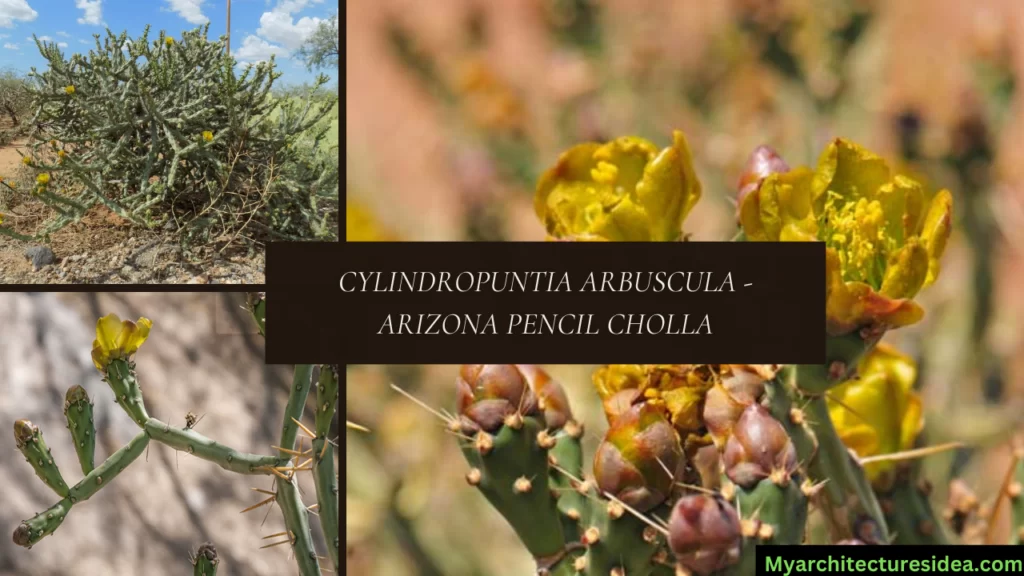
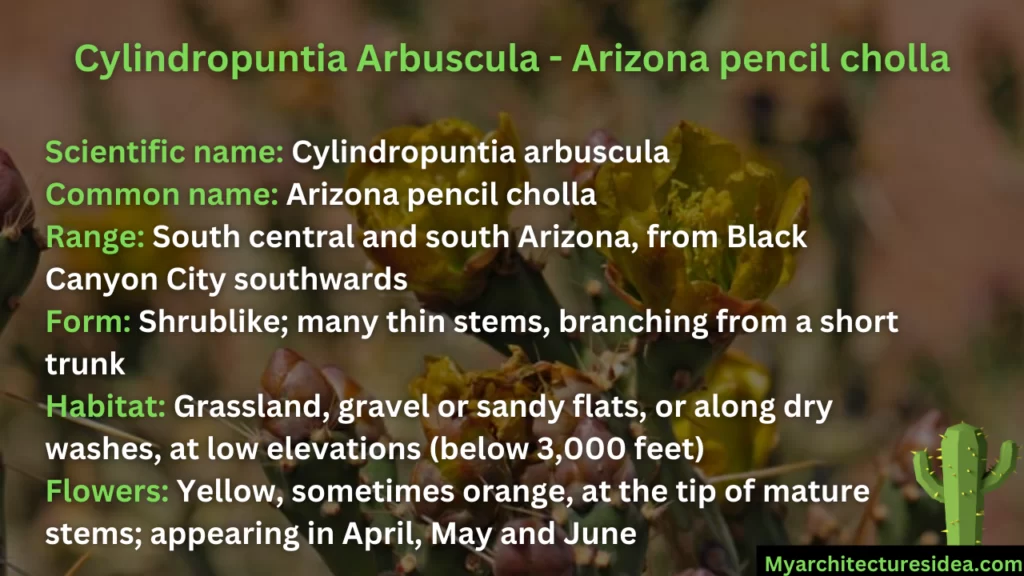
6. Carnegia Gigantia – Teddy Bear Cholla
The saguaro cactus is one of the most widely recognized symbols of the Southwest. It is found mostly in Arizona, from Kingman in the northwest to Benson and Saffron. There are some sandy areas where the plant is absent, as this cacti prefers rocky soil place with good drainage.
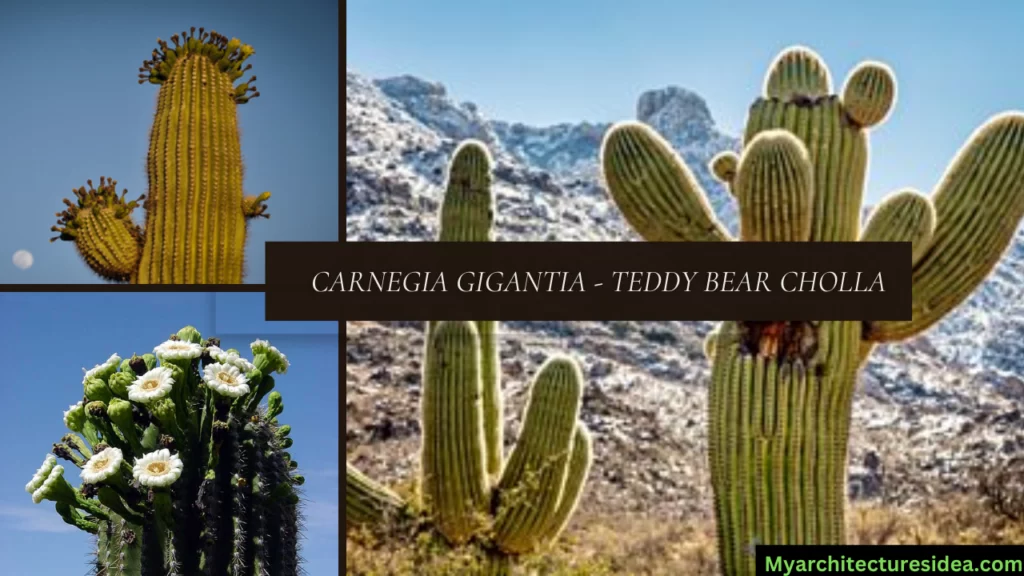
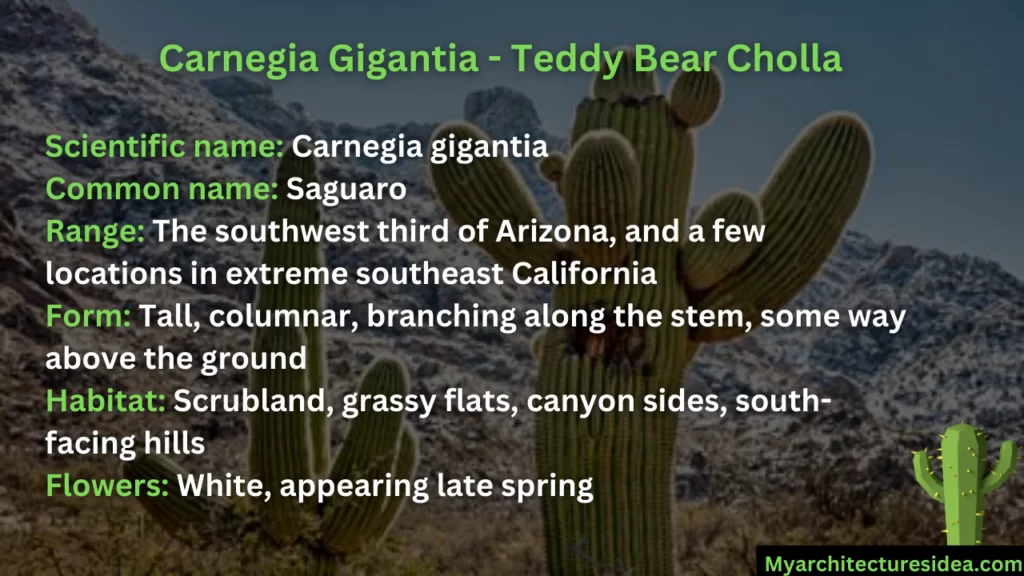
7. Cylindropuntia Echinocarpa – Silver Cholla
Like other chollas of the Arizona desert, the stems of Cylindropuntia echinocarpa are covered with a dense mass of sharp spines. The plant forms large clumps and grows several feet tall, centered on a short trunk.
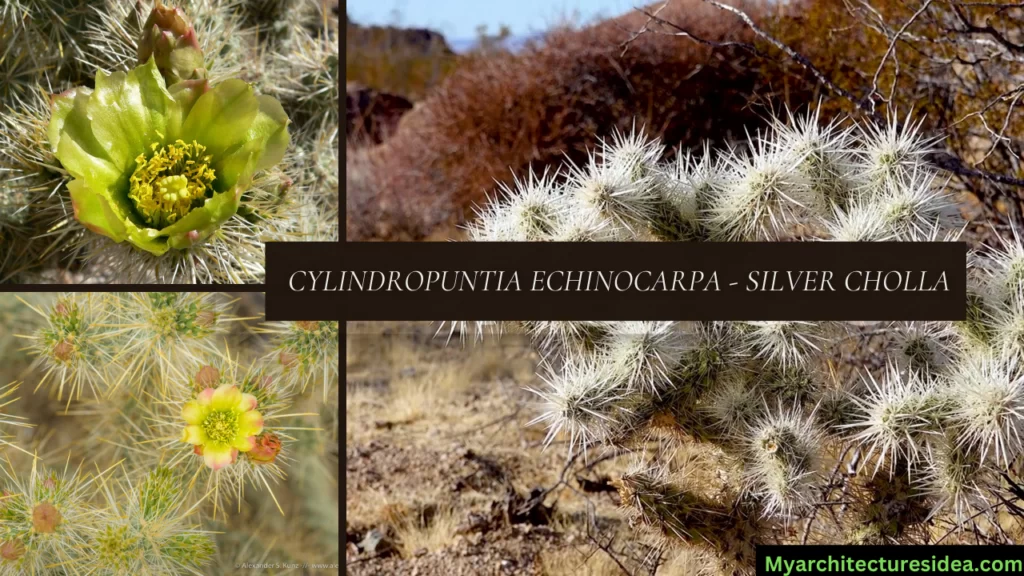

8. Coryphantha Robustispina – Robust Spine Beehive Cactus
The appearance of Coryphantha robustispina is unusual and small in size. Its compact globe is covered by long tubercles with characteristically thick spines. The radial and slightly curved centers are thick, dark in color. The yellow flowers bloom any time the middle of spring begins with the rains.
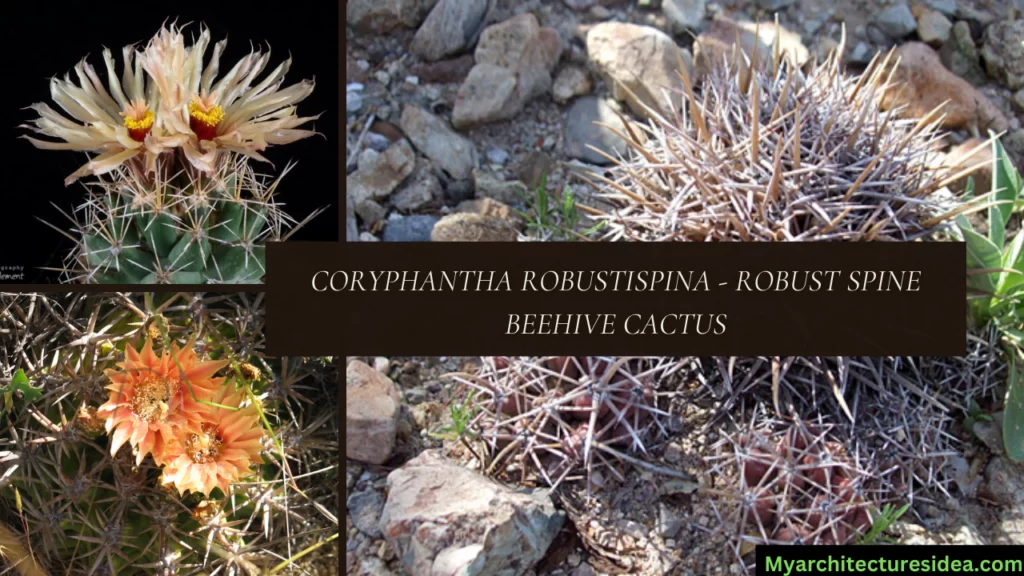

9. Cylindropuntia Leptocaulis – Christmas Cholla
The long slender stems of Leptocaulis are half an inch but the sharp and thick spines exceed 2 inches. There is usually only one spine, white or golden brown, slightly tapering downward. However, some plants are mostly spineless. The stems are light green in colour and smooth.
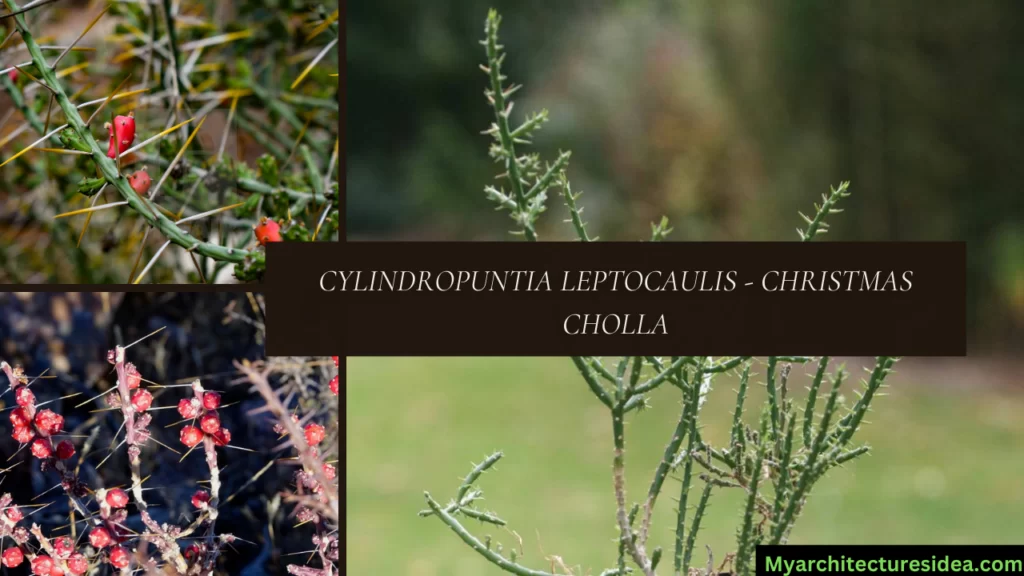

10. Cylindropuntia Ramosissima – Diamond Cholla
The long white, brown-tipped spines of Cylindropuntia ramosissima cacti grow at right angles to make a neat, and colorful plant, up to six feet tall in favored locations but usually shorter.The plant inhibits the hottest region of the Sonoran Desert on both sides of the
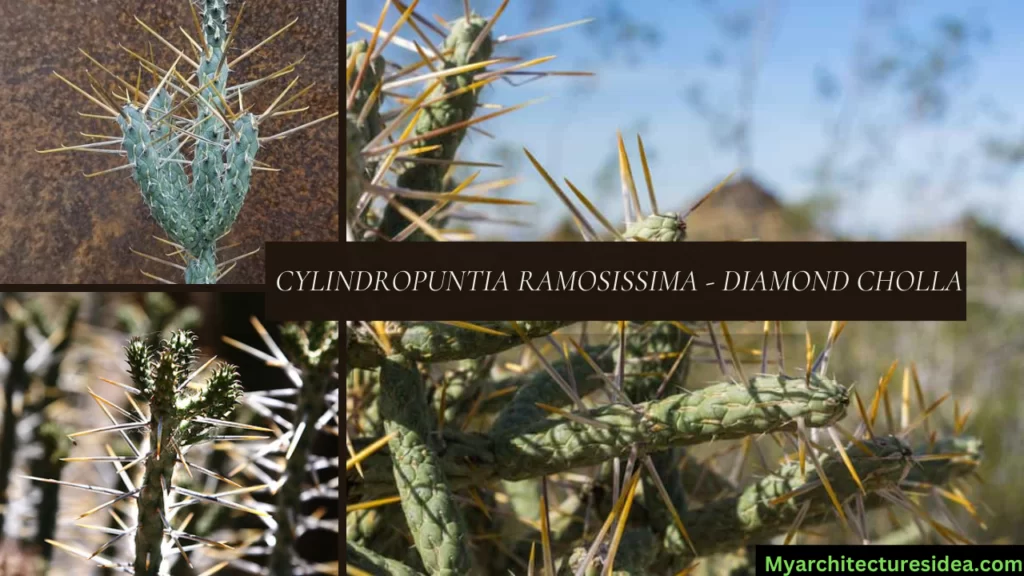

11. Cylindropuntia Spinosior – Cane Cholla
Cane sedge is similar to buckhorn in appearance and overlaps in range, but the stems are thicker, the branches are more evenly spaced, and tend to droop down. Plants are small in size, up to 6 feet tall. The bracts are between 2 and 20 inches in length which are large, tubercles and covered with clusters of 6 to 15 small spines.

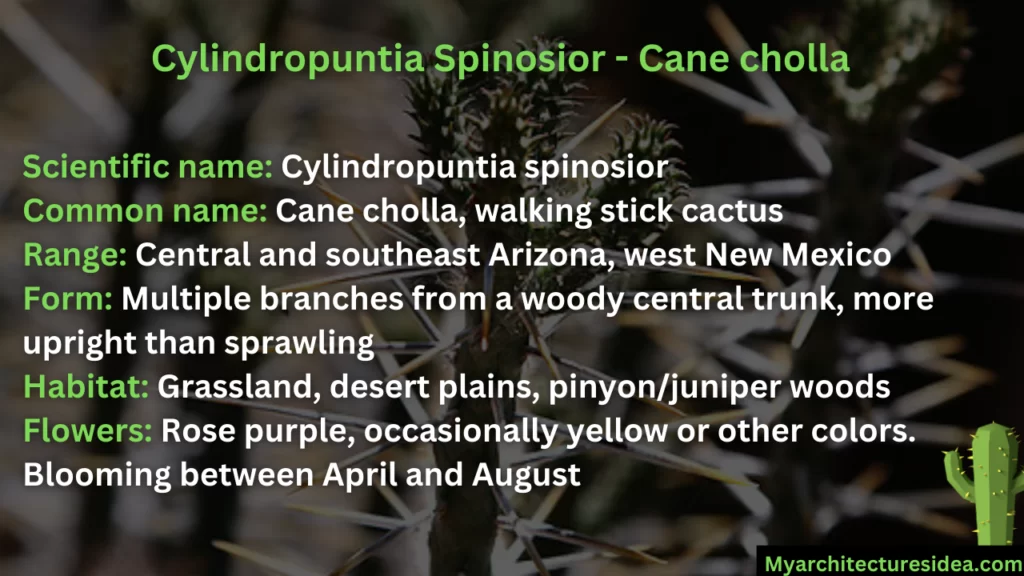
12. Cylindropuntia Versicolor – Staghorn Cholla
The Latin name of staghorn cholla (versicolor) refers to the wide range of colors of its long-lasting flowers. They are produced in early summer; It can be red, yellow, purple or an intermediate colour. The stamens have greenish-yellow filaments and yellow anthers; The lobed stigma is white or very pale green sometimes.

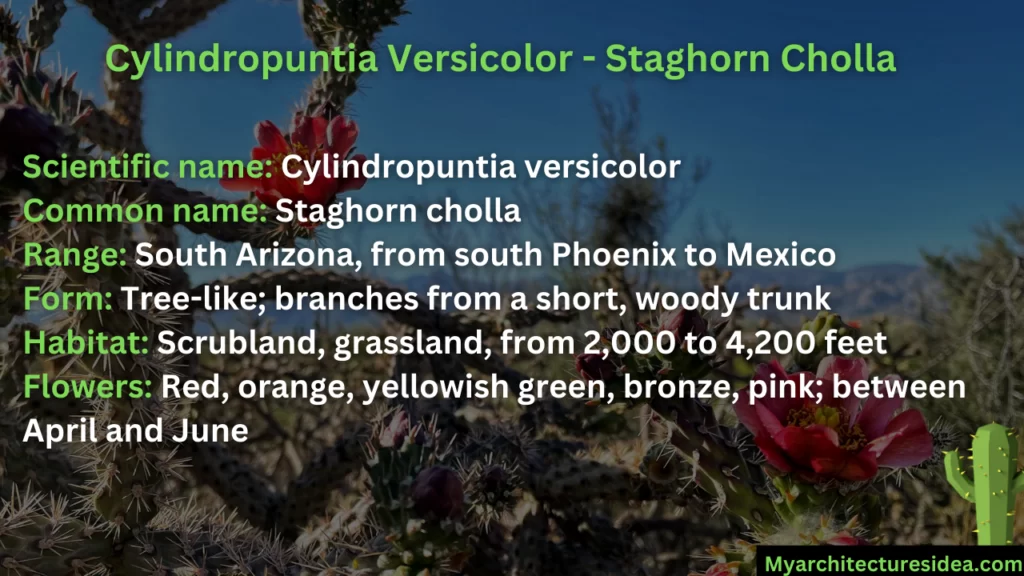
13. Cylindropuntia whipplei – Whipple Cholla
The general form of Cylindropuntia whipplei is an erect shrub, 5 feet or taller, with several 3- to 6-inch stems growing from a woody trunk. The stems are bright green or sometimes purplish green, with distinct tubercles.
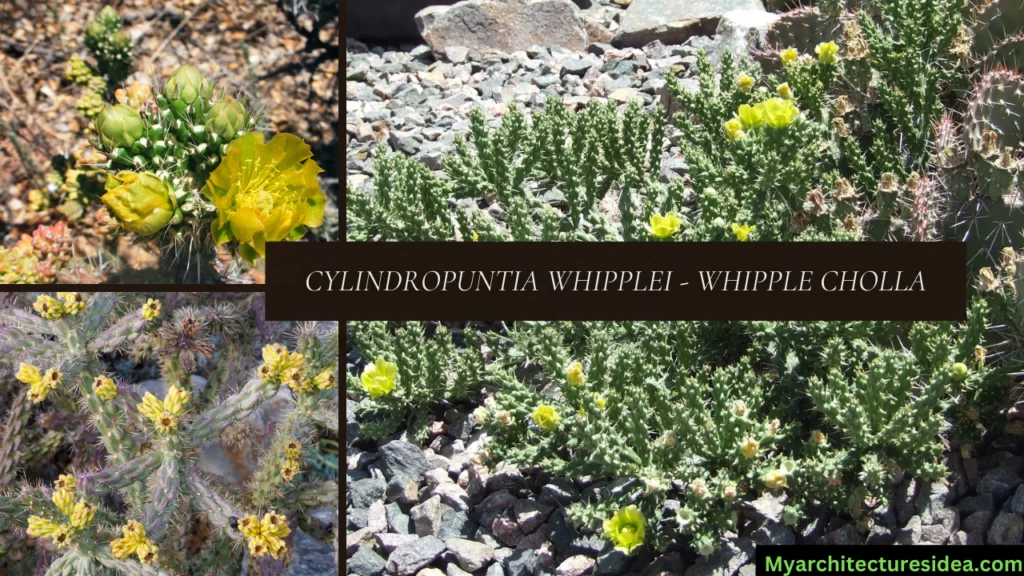
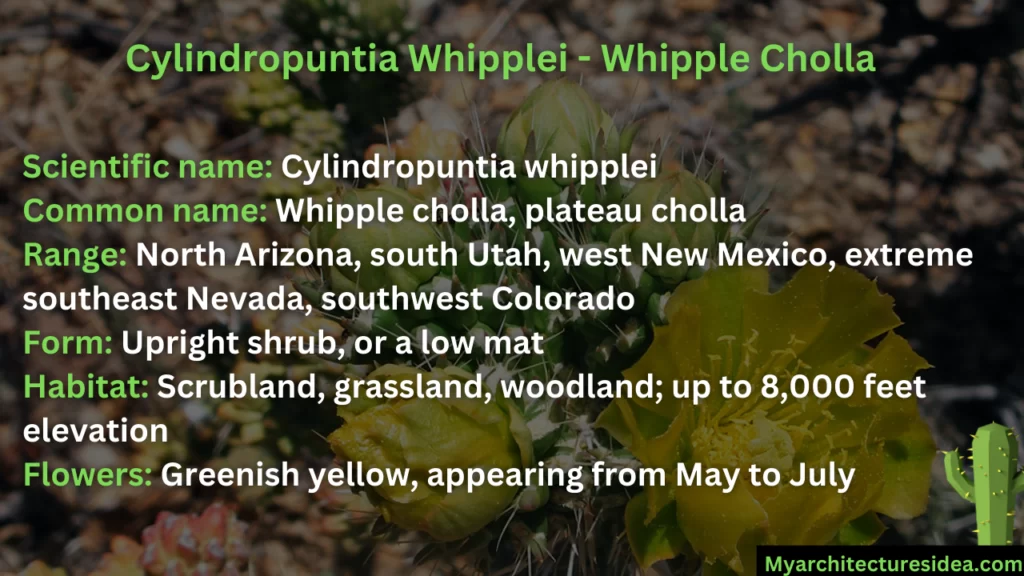
14. Cylindropuntia x kelvinensis – Kelvin Cholla
Cylindropuntia x kelvinensis is a natural hybrid of two other Arizona species, the jumping cholla and the sugarcane cholla that resembles a more mildly spiked version of the former. The general shape of the shrub and its green or purple branches is similar to that of the jumping cholla , and the plant also bears a series of spineless green fruits for several years.
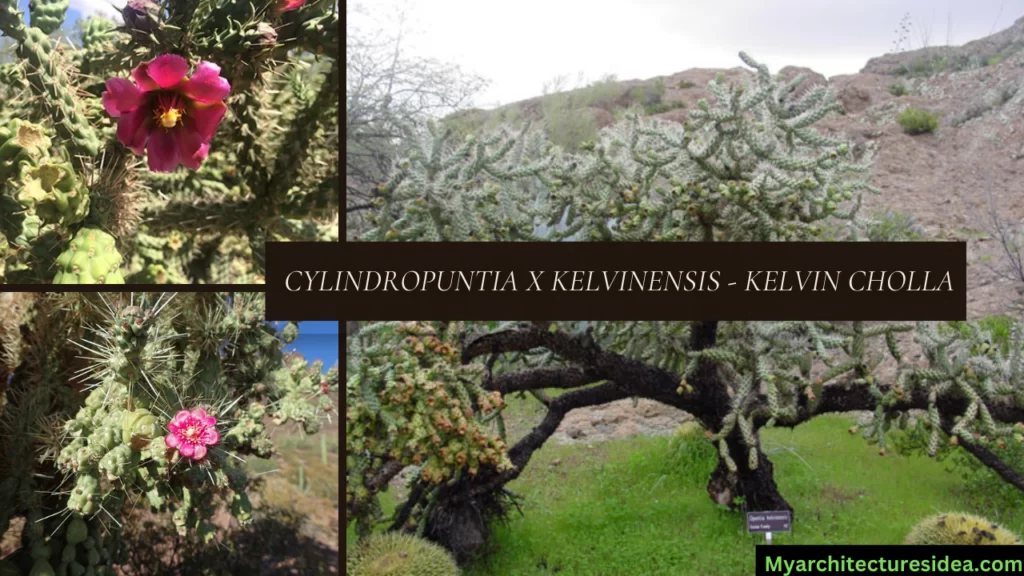

15. Echinocactus horizonthalonius – Eagle Claws
Although it is mostly a plant of New Mexico and Texas, Echinocactus horizonius is also found as far south as Arizona and around Organ Pipe Cactus National Monument, where specimens are generally larger than in the east. Bright pink flowers form at the top in early summer.


16. Echinocactus ‘Polycephalus – Many Headed Barrel
This cacti is mostly native to the Chihuahuan Desert of New Mexico and Texas, Echinocactus horizontalis is also found as far south as Arizona (Nicoli variety) and around Organ Pipe Cactus National Monument, where specimens are generally larger than in the former – Up to 12 inches long. Six inches is the average. Slow-growing species have broad ribs that develop into clusters of radial spines close to the body.

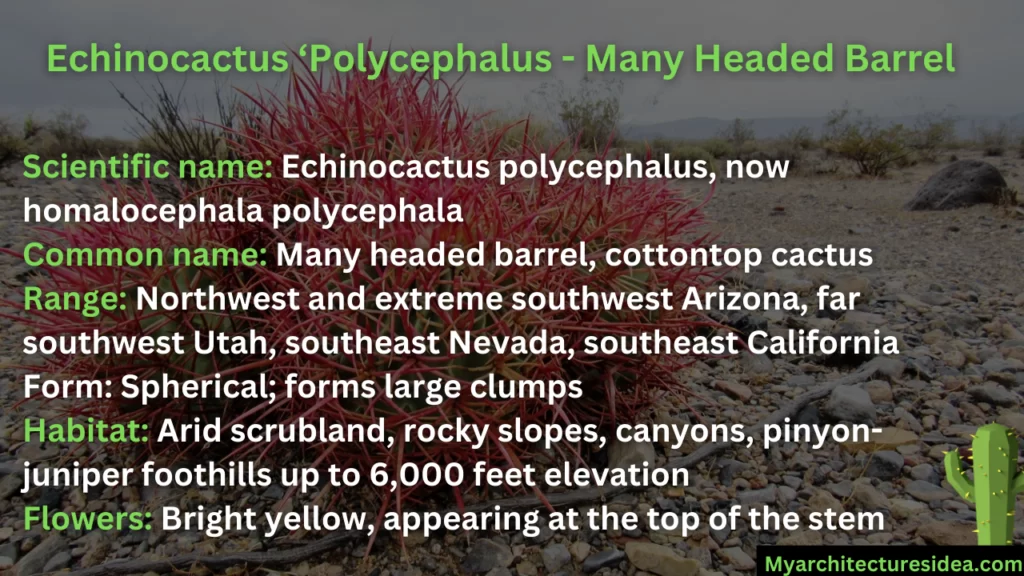
17. Echinocereus Arizonicus – Arizona Claret-cup Cactus
Echinocereus arizonicus is very similar to Echinocereus triglochidiatus, the main difference being the number of ribs. The former are usually circular in cross-section with a smooth surface, while the latter are more oval with a bumpy surface. The spine is dark but eventually turns gray. The tepals are red or orange, yellow at the base of the flowers.

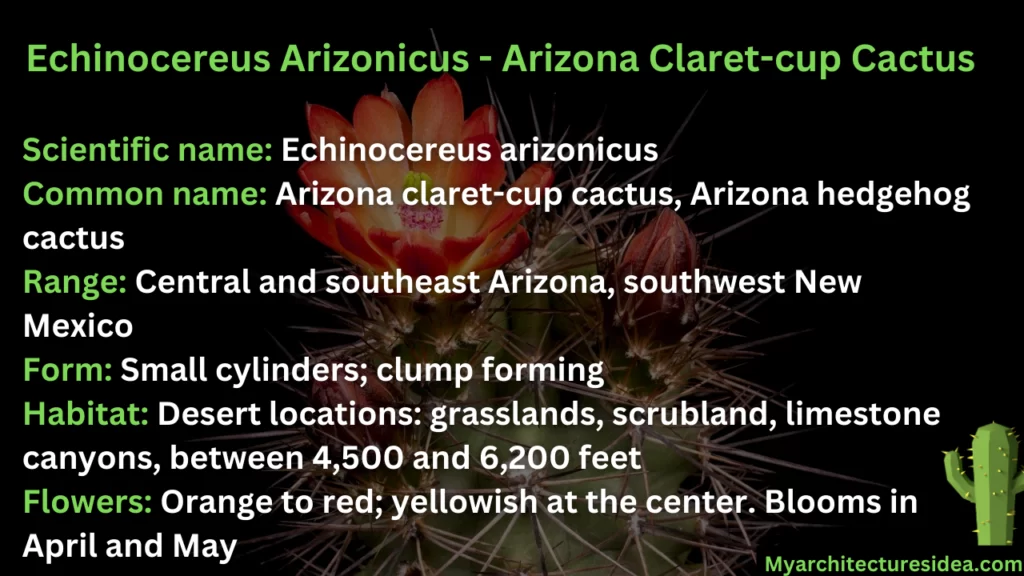
18. Echinocereus Bonkerae – Bonker Hedgehog
The Bonker hedgehog is named after botanist Frances Bonker. This is Arizona’s rarest cholla found in a small area between Payson and San Carlos lakes. This plant is quite distinctive as its spine is different from the other. The green stem is clearly visible under the spine. The stems grow up to 14 inches tall, and they sometimes form clumps of 30 or more.
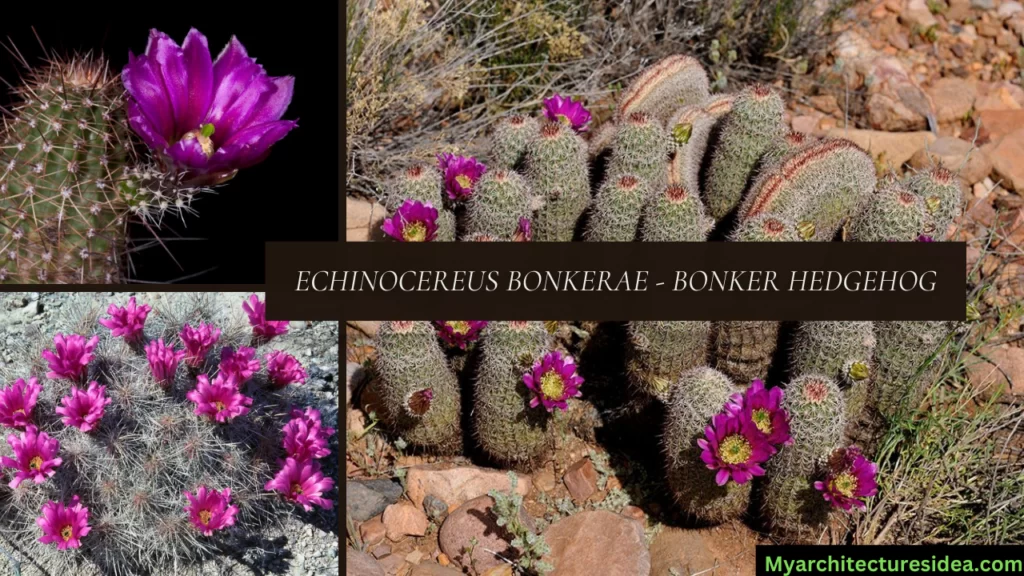
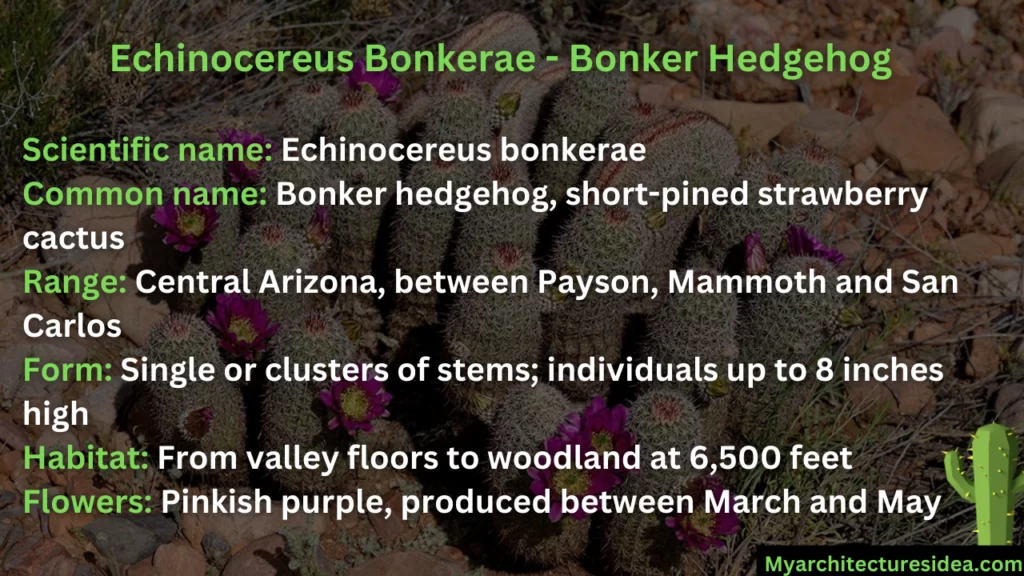
Final Words
So these were some of the most common types of cactus found in Arizona. There are more then 50 types of cacti found there. We have covered plants that are widely known. Cactus are very easy to care for and need less attention compare to other plants. Keep on visiting My Architectures Idea for more info.


